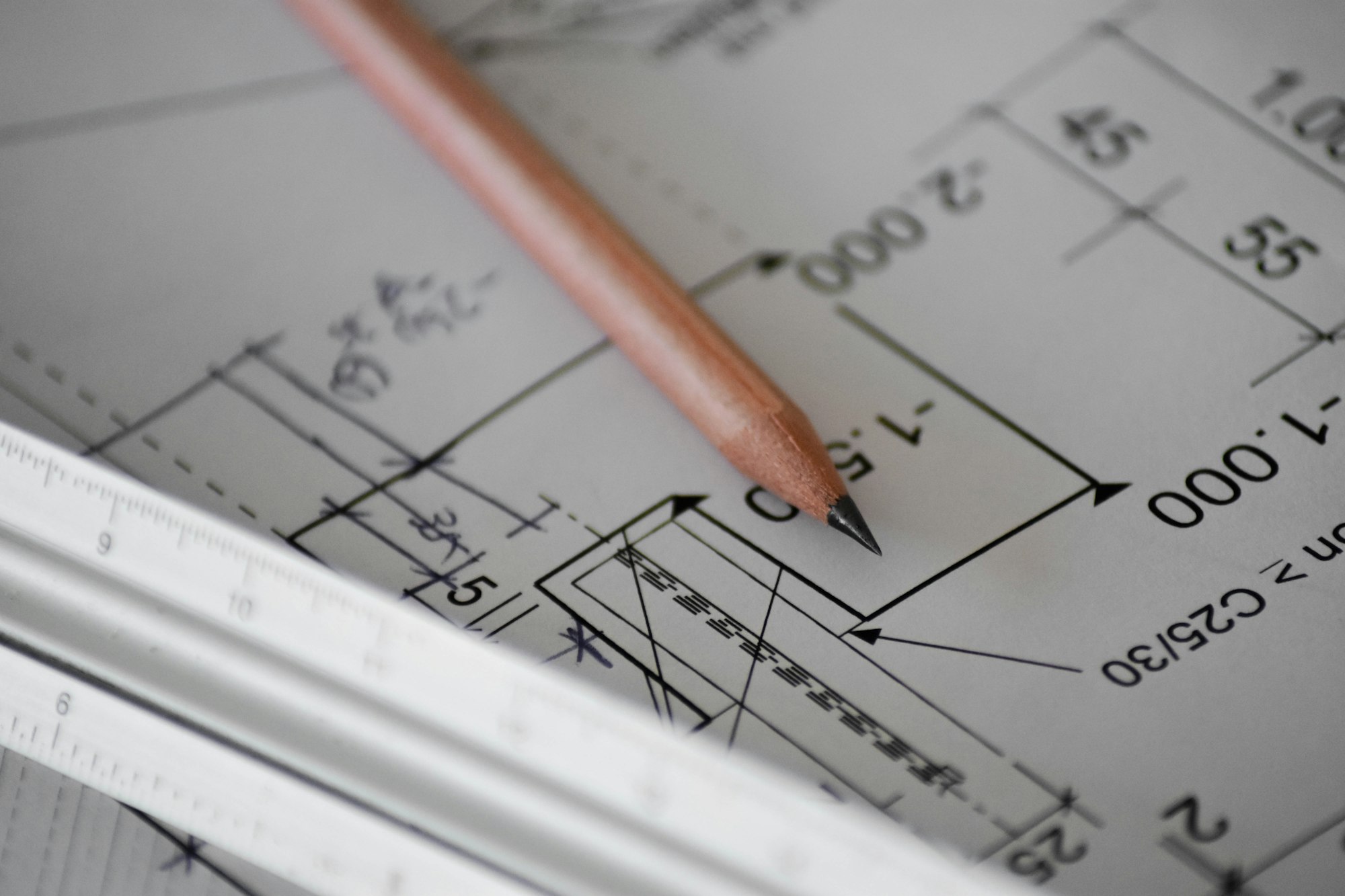Take The Quiz On This Post
Read the post, then take the quiz—test your knowledge and see what you’ve learned!
Introduction
This post will explain the preliminary service agreement process: what happens, what is produced, how and who produces what, and what information you need to make this run as smoothly as possible.
1. Site Information discovery, request for information, estimate conditions
The initial information that is needed from you to start the building process includes:
- Site location (lot and or street number) & address
- Plans, Drawings or Engineering (if completed)
- Registered Plan (RP) or Survey Plan (SP): note RP generally on older estates, SP on newer estates
- Soil test (if available)
- Services: electrical, gas, power, water, sewerage, NBN, communications - plans, as constructed(s)
- Disclosures: Any information about the site that you are aware of, including but not limited to: encumbrances, site conditions, pending legal action, service constraints, council requirements, neighbour disputes, or any other thing that could materially affect construction that you are aware of.
- Note: If you have completed our Checklist 1: What to Check Before You Buy Your Land - you will have a whole heap of helpful information to pass onto your builder (as well as help qualify the preliminary costs that your builder includes in your preliminary estimate).
1a. INITIAL ESTIMATE - SUBJECT TO CONFIRMATION OF INFORMATION
When an initial estimate is provided with this agreement, the costings that make up the estimate are subject to receipt and confirmation of the information listed above.
To enable an estimate to be produced without this information, builders must make assumptions about the form and function of the project, an educated guess of how the project can go together to be built. We will detail to you through the use of drawings and cross sections, descriptions - what the parameters of our estimate are so you can be comfortable knowing that we are both on the same page of understanding the project scope. If your builder is not understanding you clearly, let them know so they can make sure they fully appreciate your request.
As more of the information from the above list is confirmed through surveys, engineering, design/drafting, the initial costing estimate can be refined to incorporate the actual design elements and details about your project into the costings. Think of it as starting broad and getting towards a sharp/concise end point. The more concise and accurate the more value is being created and aligned to your needs.

2. Your design & specification requirements
It's a good idea to have a clear picture of precisely what you want to build: the number of bedrooms, spaces, layouts you like, ideas about materials and finishes - perhaps images of styles you have seen and like. It's also okay to not know exactly however it will save you a lot of time rather than having to learn after you pay your deposit at which point the builder's time schedule begins to operate (and you will obligated to comply with). Personally, I prefer making choices without being rushed or hurried so if you do the same, a bit of pre-deposit homework will go a long way to reduce potential future frustrations.
We need to know any "must have" design & specification requirements - "Your Requirements", this could be things like "must use hardwood, 150mm thick concrete slab (32mPa concrete strength), core filled blocks or timber framing preferences, timber cladding over fibre cement cladding, stainless steel or galvanised details".
If you are unsure, that's ok; just note down your thoughts to discuss these points with a sales consultant or with your builder. It is their job to help you and to make suggestions to you at your initial meeting.
3. Site Inspection
Next, an initial site inspection is carried out to physically inspect the site to identify any issues that need to be considered in the design & construction of your project.
Your builder should take photographs during this inspection that can be shared with preliminary agreement service providers to assist them in providing their services.
They should also undertake an adjacent properties inspection (if applicable) to identify any pre-existing damage to structures, fencing, services, fixtures or council areas around your site.
4a. Preliminary Services Agreement (PSA)
To get things moving, your builder will need to make sure they have your permission to act on your behalf and a signed agreement (consent from you) to provide preliminary services to you. The PSA documents exactly what you authorise the builder to do and what they charge for this. The basis of your initial deposit is calculated from the tasks detailed in the PSA.
Note 1: The Preliminary Service Agreement is often called the PSA (long names confuse builders so they prefer acronyms). The PSA sets out the services we will provide to you and the costs for each service.

4b. Electronic Communication Consent Form
Ah the internet age. We simultaneously love and hate you in measured amounts. An electronic communication consent form is one piece of paperwork necessary to sign when paying a deposit to a builder. The reason and need to sign one of these forms is for you to provide consent to your builder contacting you using electronic means like email. This must be done, or else it can create problems if the information was sent (or not) and not received or it is assumed by one party that email is an appropriate form of communication, yet contract documents state otherwise. Signing and electronic communication consent form removes ambiguity from what is considered to be an approved method of communication.
5. Preliminary Service Agreement Cost Basis
Many of the services provided under the PSA are cost-based on a total size of your project relative to a floor area or total metre squared - total m2.
Moreover, because (if there is) no plan or design is in existence yet, and to make sure you are fully informed from the start, we have based this PSA on a total floor area for an example house size of 255 m2. Note: this changes depending on the size of your desired house floor area or the standard design size that you have chosen to base your home on.
Why this figure? It's a starting point that we have based on the information that we have at hand as at the time of preparing this agreement.
Should the floor area increase or decrease in the design process, or from design changes as we progress through the PSA services or should the specification change dramatically, the prices of the services billed in this PSA agreement will also need to be adjusted.
Why? If the area gets bigger, there are more elements to measure and prices to estimate. It is also because the professional services partners provide are mostly (engineers charge according to complexity for example) based on the total floor of your project. This means they will set more to provide their service to the builder. The builder will pass through these charges to you.
Similarly, if the project floor area is reduced, whatever costs not yet incurred (that are calculated based on the total floor area) will be adjusted to reflect the difference between the project starting floor area and the project's smaller floor area i.e. we pass this saving back to you as an adjustment to the deposit stage claim.
5a. Please keep in mind:
The cost of the preliminary service agreement is deducted from the first deposit payment stage of the building contract. This stage claim amount can be no more than 20% of the total contract value - when the value of offsite works in the contract is greater than 50% of the contract price, or, 5% of the contract price where the value of works is greater than $20,000 but the value of offsite works is less than 50% of the contract price.
Once the scope of works is clearly defined by plans and specifications/details/engineering and detailed quantities are prepared, they builder (via a contract administrator) will know exactly which contract is best for your project. In this example we are saying the QMBA contract will be used.
Your builder will confirm the deposit amount with you when the QMBA contract is prepared and discussed at a meeting with a salesperson or with the builder directly.
Should the costs incurred by us to execute the Preliminary Service Agreement decrease (the total floor area reduces in size), from what have already paid us under this agreement, we will reduce the contract deposit stage payment by this amount.
If the costs incurred by Your Builder to execute the Preliminary Service Agreement increase (the total floor area increases in size), we will advise you as soon as possible so that an adjustment payment may be made to us to cover the additional costs incurred.
6. How the PSA works
You Pay your initial deposit, Item 3 below, and sign/complete the Preliminary Services Agreement (this document) to authorize Your Builder to:
(Note: delete this note - Delete or add items to this list as determined on a job-for-job basis)
- Engage an independent certified engineer to carry out a soil test & site assessment (if applicable)
- Engage a licensed surveyor to survey the land and provide a detailed site contour survey (if applicable),
- Carry out preliminary site investigations & searches with local authorities collect information that may affect the project design.
- Develop a design concept (floor plan and elevations (if required)) based on your design & specification requirements,
- Prepare a draft specification based on your design & specification requirements, the concept design & engineering (once received).
- Prepare a preliminary budget based on the concept design/engineering and your design/specification requirements.
Items 1 through 3 above are required to produce a detailed site plan, including earthworks, understand the site conditions and factors that could affect the house size & design (council considerations, acoustics, easements, building envelopes etc), Items 4 & 5 are required so we can prepare item 6.
7. Your PSA payment is non-refundable - why?
Your PSA payment is non-refundable. Once the builder receives your payment, they engage, request and pay for the services of professionals who provide the services (deliverables) outlined in this agreement. The services they provide are specific to your site, as in, they cannot be repurposed or reused anywhere else.
From a builder's perspective, once you sign the PSA and pay - that's their green light to go and instigate, co-ordinate, manage then deliver to you the results of the services (deliverables) you have engaged them for.
Note 2: It's important to note that all monies paid to Your Builder Construction under this PSA are deducted from the contract price in the deposit stage payment.
8. What and when do things happen once you sign & pay for the PSA?
Good question.
Once the soil test, contour survey plan, design sketches (ideas) & engineering have been received by your builder (allow 3-4 weeks) and they have all the search information about your site (service information, design consideration), your design requirements & specification inclusions have been outlined, they are ready to begin the next phase of the PSA service that is to prepare a concept design, a specification and a preliminary budget for you.
Once the concept design is received from the designer, they will meet with you to get your feedback. This is often called "the first run" by Builders. Id like to say I know exactly why they call it this, and I can guess by saying that it is your "first run" through the design process (as in, request, changes made then submitted for your review = 1x run).
Your feedback from this meeting will be incorporated into a second draft design which will be presented to you at your next design meeting.
Builders will often go through this same iteration two more times should it be necessary until you have finalised the design inclusions.
With the design finalised, the builder can also finalise the draft specification (the specification details all the fittings and fixtures in your house).
Next, with design and specification in hand, your builder can prepare a preliminary estimate. This high-level document breaks the house down into major groups and assigns values for budgeting purposes. This document tells you how much your house design in its current specification should cost.

9. Preliminary Budget Meeting & Pre-Contract Costings
Once the preliminary budget is prepared, your builder will meet with you again to go through the cost elements of the design and the specifications to ensure your budget and requirements are met.
They should provide you with a copy of the preliminary budget so you can review it thoroughly and decide if there are any final changes you would like to make.
Alternatively, your builder may ask you to make your final amendments directly with them during the preliminary budget review meeting.
This is the last opportunity to make design changes before everything is set and contract documents are prepared.
The detailed estimate forms the basis of all the purchase orders & trade contracts that we issue to construct your new home.
After you have reviewed the preliminary budget your builder will request that you pay the second deposit of (inc GST) in order to proceed to the next step, Contract Documents.
Note 3: The second deposit figure is based on a total floor area of (example house size of 255 m2).
Note 4: Should the total floor area increase or decrease the second deposit figure will be adjusted accordingly in the paperwork we present to you
Note 5: It's important to note that all monies paid to Your Builder under this PSA are deducted from the contract price in the deposit stage payment.
10. Signing of the QMBA Contract Documents
Your builder will prepare a QMBA Building Contract and then contact you to arrange a meeting time to sign the Contract and accompanying document. We use QMBA contracts as they are clear and detail well the scope of work to be performed by the builder for the client. The contract is written in plain English and has been written to be equally weighted, as in, both the clients and the builder's interests are equally weighted.
If you are financing the construction of your home, your builder will send you a PDF photocopy of the Building Contract once it has been signed, so that you can take it to your financial institution to allow them to begin the official loan process, otherwise a copy for this purpose will be posted to you with the original.

11. Colour Selections
As soon as your contract has been signed and received by your builder, they will make a suitable time for your Colour Selection Appointment. You will be asked to bring several items of information (e.g. proof of land ownership) to your Colour Selection Appointment. Proof of land ownership must be provided before scheduling the start of construction.
Any changes you request after the contract has been signed will be processed as Post-Contract Variations and will need to be signed by you before they take effect.
Note 6: Post-contract variations will incur a $110.00 (GST Inclusive) administration fee.
Why do builders charge a post-contract variation fee? Because the detailed estimate has been completed previously. Any changes made after it requires the whole assessment to be adjusted to accommodate the variation. This takes time to ensure that every element associated with the requested variation is adjusted accordingly.
Aside: I wouldn't say post-contract variations are a difficult job in any way (depending on the detail of the requested change) and often only require updating variations, potentially contract documents, plans need to be adjusted, and depending on if approvals have been received i.e plumbing/drainage or certifier approval, they plans may need to be re-lodged for updated approval (and may attract administrative charges from each body who is required to reapprove).

12. Building Approval
As soon as your contract has been signed and received, your builder will pay all relevant insurances and levies, then lodge the Building Application, and the separate Plumbing and Drainage Application, for approval with an Independent Private Certifier.
Note 7: The plumbing permit (if required) can only be approved by the Local Authority and can take up to six (6) weeks to process.
When your builder receives these approvals back two (2) copies will be forwarded to you, along with the Builder's' All Risk Insurance certificate, with one copy for you to pass onto your financial institution (if applicable) as soon as possible so that they can finalise the construction loan.
Your builder must receive both the building approval and the plumbing approval (if applicable) permit before we can schedule the start of construction.
13. Authority To Commence - Financed Clients
When your financial institution has finalised your construction loan, they will notify either yourself or Your Builder, depending on their procedures, If you receive this notification, please forward a copy to Your Builder by email - as soon as possible. Your builder must have a copy of this notification before we can schedule the start of construction.
If you are contributing funds to the project yourself, we will need a copy of a current Bank Statement showing that you have the necessary funds available or a statutory declaration.
If you will be using an entity like a company or trust your builder will require a statutory guarantee and a director's guarantee stating sufficient funds are available to pay progress payments as they are invoiced. They will also require you to complete an “authority to authorise payment on behalf of an entity” form, have it signed by the entity's stakeholders that authorises you to make payments on behalf of this entity.
When they have a copy of these documents and you have paid your balance of deposit, you will be contacted and advised that your file is complete and the site start date that has been allocated to you will be confirmed.
14. Authority To Commence - Self-Funded Clients
Once your builder has forwarded your Building Approval to you, all you need to provide them with evidence that you have the funds available to pay the full contract price (less deposit already paid).
A statutory declaration or Directors Guarantee with an Authority to pay on behalf of the nominated entity form, in the correct name(s) will secure you a scheduled start date for your home. You will be contacted and advised that your file is complete and the date that has been allocated to you will be confirmed.
Note: yes, this does sound like a bit of a stupid process for the reason that it is easy for anyone to move funds into an account, print out a "funds available/statement balance" from the bank website, forward this to the builder then on the same date move the funds away or use them elsewhere. I have heard people say this on numerous occasions, I get what they are saying, but it doesn't really mean much in the context of a contract and progress claims. Simply put, if your builder has genuinely reached a progress stage claim and presented it to you for payment, under the contract you are obliged to pay it or else you may be in breach of contract. The builder doesn't care from which account or where the funds come from, as long as they get paid.
15. Start Of Construction
Construction will commence by the specified date in your Contract, provided that your builder has received the Building/ Plumbing Permits, a written Authority to Commence Construction' from the financial institution (or satisfactory evidence of the owner's capacity to pay the full Contract price), proof of Land ownership (in the form of a recent rates notice, title search or settlement letter from your solicitor stating the date of settlement), and signed copies of any Post Contract Variations (if applicable) two (2) weeks prior to the specified date.
16. Updates & Site Visits, Progress Claim Stage Meetings
Once construction begins, YOUR BUILDER SHOULD provide weekly update reports advising who was on site, what work was performed, weather/delays and any other important information.
There are so many different project management systems builders can use. I'll name a few below, then discuss each further in future blog posts:
- Libre Project (Open Source/Free) - WBS - Awesome software
- GanttPro
- ProjectManager
- Autodesk Build
- Fieldwire
- Microsoft project
- Toms Planner (light weight gantt charts)
- Zoho Projects
- Clickup
- Mindomo (has a Gantt chart view and dependencies inside mind maps)
- Monday
- Jira
- Quire
- MindMeister & MeisterTask
- Fieldlens
- Redbooth
- Asana
- Wrike
- Trello
- Flowlu
- Smartsheet
- Hygger
- Zoho Sprints (yep, you can run a residential build as a sprint/agile)
- Airtable
- Smartsuite
- StackBy
- Spreadsheets.com
- Quip
- Teamwork.com
- Confluence
- You could even use IOS notes/Reminders and Icloud for a super cutprice cloud sharable PM solution.
- What I'm attempting to illustrate with this list is that there should be no excuses as to why a PM solution can't be used. Here is a myriad of cost-effective PM solutions to run a quality management system. I have deliberately excluded listing all the legacy - expensive solutions like Framework, Sage (I think has a building solution) and I've ignored some of the US solutions like CoConstruct & BuilderTrend because they are an end to end management system.
With the available cloud-based solutions, there is zero reason why every builder does not use some form of online project management software. Similarly, most of these systems allow external collaborators (owners) to be invited in read-only or read-and-comment-only capacities.
This means you should get a seat at the quality management table, be able to see exactly where your project is at, comment and interact (upload) content and comments/information to assist in progressing the project and see what is left to be done to complete the project.
There are five main progress stage claims (for residential homes) under the contract; these are;
- Base Stage
- Frame Stage
- Enclosed Stage
- Fixing Stage
- Practical Completion Stage
Progress claim stages are detailed in your contract and reflect a % of the contract price at a stage of progress being achieved.
As each stage is completed and before, your builder will issue a progress claim. It is good practice for them to contact you to arrange a time to meet on-site to explain the stage completion and answer questions you may have about the current or the next progress stage about to be started.
To ensure continuity of construction, it's best to save your questions until you meet at each progress stage meeting to discuss, unless they are urgent in nature; meaning they affect the immediate health and safety of site personnel or an impact on quality or the performance of the structure.

17. Practical Completion
When all contract works are completed, a suitable appointment time will be arranged for you to inspect the project and identify any adjustments. This is also called a blue tape inspection.
Adjustments are anything minor in nature that may have been missed in our quality assurance of the construction. We aim to have a minimal adjustment list but we understand that a hand-built product may need adjusting all the same, During this inspection, we check over the entire house for quality and performance,
Anything that may require adjusting is also listed in a practical completion document and a rectification date. Your builder will provide two copies of the adjustments list for your records.
Once you are satisfied that all works have been completed and all outstanding monies have been received by Your Builder, an appointment will be made to hand over the keys to your new home, along with the relevant warranties and certificates.
Sometimes, the builder may insist on receiving the final progress claim via a bank cheque during the handover meeting with the construction supervisor. They prefer this handover method because it avoids waiting for funds to be cleared before handing over the keys and, within the context of the building contract, transferring physical possession of the site back to you (and, consequently, releasing the builder from the house).

18. 6 Months Adjustment Liability Period
For larger projects, home construction in particular, 6 months from the date of Practical Completion, if any further adjustments are required to ensure the performance or function of construction elements, fittings or fixtures, or should an element be found as defective or faulty, your builder should only require that you submit to them a 6 months Adjustment Period item list (we provide you with the form to facilitate this).
Once they receive this list we will contact you to organise a time to inspect the items. Once the items are reviewed and approved for adjustment, they should advise to you the details of who has been contacted to carry out the approved adjustments.
Your builder is responsible under the contract to perform 6 months period adjustments. After the expiration of the 6 months, they should happily investigate any concerns you or a second owner may have. Concerns will be assessed in consideration of the terms outlined in the QMBA contract for which we parties are bound to.
Note 9: QBCC New home warranty insurance: As part of the building process, the builder pays a premium to the QBCC to insure the construction. Should there be any issues about the quality of work, defective work or subsidence, the QBCC insurance policy remains on the house/project for 6 years and 6 months from the date the premium is paid, the contract entered into or the work commenced on site (the earliest of these).
Conditions To The PSA Agreement
1. If the Contractor's tasks include the submission of any plans or specifications to the Local Authority or Private Certifier, or any other Authority for approval and such approval is refused or otherwise not granted within sixty (60) days of the date hereof, the Contractor shall notify the Owner of failure or refusal and either party shall then be entitled to cancel the Agreement by notice in writing to the other party.
2. In the event that the Owner is unable to obtain loan approval, if applicable, the Owner shall immediately notify the Contractor to that effect. The Owner may then cancel this Agreement by notice in writing to the Contractor, provided that such notice is accompanied by written evidence acceptable to the Contractor of the Owner's attempted compliance with Item 2. On receipt of notice that the Owner has been unable to obtain loan approval, the Contractor may at his option, cancel this Agreement by notice in writing to the Owner.
3. In the event this Agreement is cancelled in accordance with either Condition l or 2 or in the event the Owner refuses or declines to enter into a Contract with the Contractor for the construction of the work as documented pursuant to this Agreement then the Owner agrees the Contractor shall be entitled to retain or be paid the sum referred to in Item 3. If at the time of cancellation the Contractor's costs and outlays for carrying out the Tasks are less than the amount referred to in Item 3 the Contractor will either refund the difference between the two amounts to the Owner or will accept the lesser amount as full and final payment, whichever is applicable.
4. The Owner hereby expressly warrants and agrees that the Contractor has unlimited right to use, reproduce or otherwise deal with any drawings, specifications or other documents supplied to the Contractor in connection with the building works. The Owner hereby indemnifies the Contractor against all claims, losses and actions that arise in connection with the use by the Contractor of the said drawings, specifications or other documents.
5. If the Contractor prepares the said drawings and specifications and either party cancels this Agreement as provided for in Conditions 1 or 2, or the Owner fails or refuses to enter into a contract with the Contractor for the actual construction of the works it is hereby agreed:
5a. All drawings and specifications so prepared shall become and remain the sole property of the Contractor.
5b. The Owner shall not use, reproduce or otherwise deal with the said drawings and specifications unless the Owner has paid the Contractor a further sum representing the reasonable cost for using such drawings and specifications. It is further agreed that the Owner's right to use such drawings and specifications shall be confined to only the purpose for which they were prepared and the Owner shall not be entitled to make use of the documents for any other purpose.
5c. The Contractor shall supply to the Owner copies of the Survey Plan and Foundations data e.g, soil test.
6. By agreement between the parties, a dispute in connection with this Agreement may be referred to the Master Builders Queensland (MBQ) for a without prejudice conference at any time, provided that one of the parties is a member of the MBQ. If conciliation by this condition is unsuccessful, then the dispute may be referred to the Queensland Civil and Administrative Tribunal (QCAT) for resolution.
7. The Contractor's fees may be adjusted for any additional tasks when confirmed in writing between the parties.
Conclusion
Ok, that was a long post. We thought it would be better to put this entire process in one post rather than spread it out over two or three to make it easy for you to find and refer to in the future.
It may seem like a daunting process but its not. We highly recommend that if your builder isn't organised enough to use a project management system, you use your own to track yourself and tasks to be done.
The more organised you are in this process, and the faster things are done, the faster you will move through it. We are not saying to do things any faster than you are comfortable in doing them,, just be aware it is very easy for time to creep into everything, and the whole project takes much longer than you anticipate or budget for.
Stay tuned for a future update to this post, where we link to our construction process template that you can copy and use to stay organised for the whole construction process.
Further Reading
















